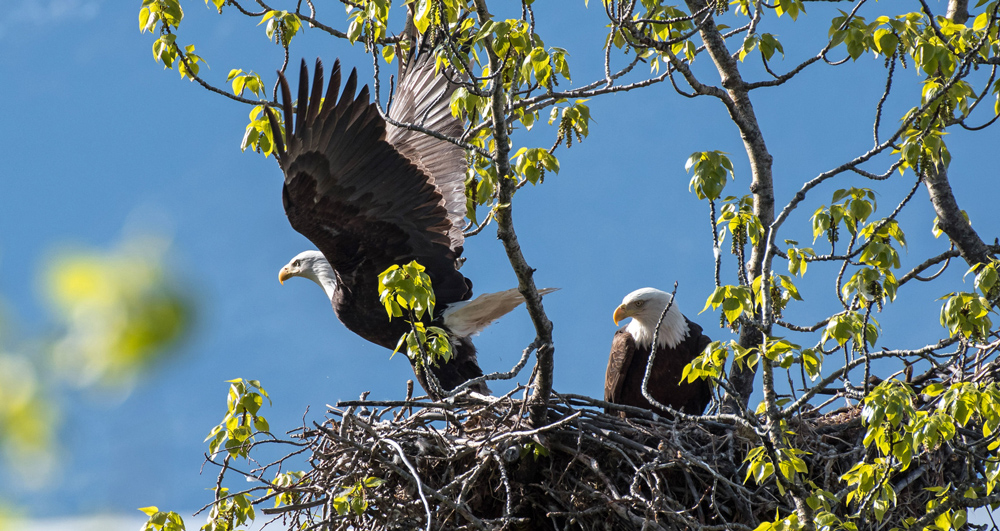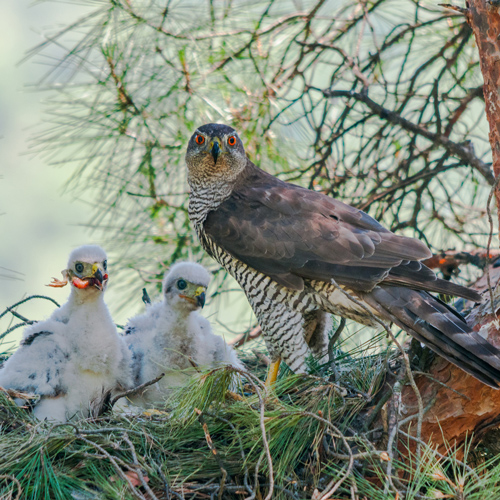Alaska Wildlife Rescue provides raptor rescue throughout Alaska. A few of the raptor species rescued are eagles, owls and hawks:

Raptor Bird Rescue
Alaskan Eagles

Within Alaska, there are two main species of eagle: The Bald and the Golden Eagle; The Bald Eagle being the most common. Sightings of these raptors are mainly along coasts, around large bodies of water, and offshore islands. Unfortunately, due to habitat destruction, illegal shooting, and pesticides, their population size is depleting and their need to be rescued is becoming more and more critical.
More information about Alaskan Eagles can be found at http://www.adfg.alaska.gov/index.cfm?adfg=baldeagle.main and http://www.adfg.alaska.gov/index.cfm?adfg=goldeneagle.main
Alaskan Owls

There are ten species of owl that are native to Alaska. The two that are most commonly found are the Snowy Owl and the Great Horned Owl. Owls can be located anywhere from open, treeless areas like the Arctic tundra, to vast, green forests in the Southeast regions. These raptors, although they are protected by the Migratory Bird Species Act, are often hunted and sold overseas, in collisions with vehicles, or fly into power lines, making their rescue vital for their existence.
More information about Alaskan Owls can be found at http://www.adfg.alaska.gov/index.cfm?adfg=owls.main
Alaskan Hawks

There are two main species of hawks that are found in Alaska: The Northern Goshawk and the Sharp-Shinned Hawk; The Northern Goshawk being the most commonly known. The majority of their lives, they spend in mountainous or highly wooded habitats, making it hard for them to be spotted. On the occasions that they are noticed, one will recognize them by their distinct “few flaps and glide” flight technique. This raptor species’ rescue is paramount for their survival because unfortunately, they are threatened by long winters, hunters , disease, and vehicle collisions.
More information about Alaskan Hawks can be found at http://www.adfg.alaska.gov/index.cfm?adfg=northerngoshawk.main
Our Services
Contact Us
By Phone: 907-290-3123
What do I do if I find a baby eagle, baby owl or baby hawk?
Young birds, nestlings or fledglings of many species are often found on the ground. Raptors that do not yet have feathers, also known as nestlings, are not ready to fly and sometimes fall out of their nests. If this happens, a parent may still care for the nestling on the ground, even after human contact. If the location of the nest is unknown, it is highly advised to move the baby bird to a shady spot off the ground, in order to protect it from predators.
Furthermore, fledglings are young birds that have their first feathers and are just leaving the nest. These birds are learning to fly, so they will spend a considerable amount of time on the ground and usually do not need assistance. Parents are often close by to watch and feed the fledgling, when needed. Remember, the least amount of contact is always best to keep the baby bird from injuring itself. On the other hand, if it is suspected that the parents are no longer around, please contact Alaska Wildlife Rescue.
Information We Need to Know
- Is there any large nests near the bird?
- Is there any obvious injury to wings or is it leaning over?
- Is the bird near a road or open water?
- Can a picture be taken of the bird safely?
- Are there any feral cats or dogs nearby?
What do I do if I find an injured eagle, owl or hawk?
It is common for eagles, hawks, and owls to sit in one place for several hours. On the other hand, it is important to also note that if an eagle or other raptor remains in one place for more than 24 hours, and does not fly away on approach, please contact Alaska Wildlife Rescue immediately. Please remember that the least amount of contact is best to keep the bird from any further injury.
Information We Need to Know
- Is there any large nests near the bird?
- Is there any obvious injury to wings or is bird leaning over?
- Is the bird near a road or open water?
- Are there any feral cats or dogs nearby?
